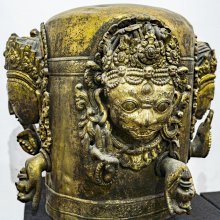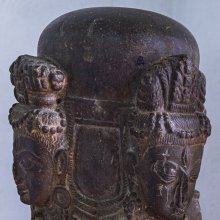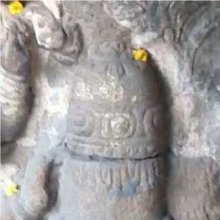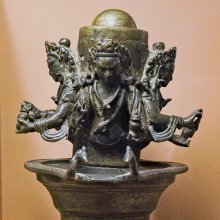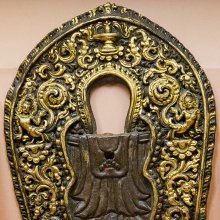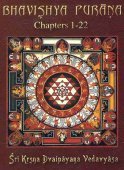Shivalinga, Śivaliṅga, Shiva-linga, Shivalimga: 13 definitions
Introduction:
Shivalinga means something in Hinduism, Sanskrit, Marathi, biology. If you want to know the exact meaning, history, etymology or English translation of this term then check out the descriptions on this page. Add your comment or reference to a book if you want to contribute to this summary article.
The Sanskrit term Śivaliṅga can be transliterated into English as Sivalinga or Shivalinga, using the IAST transliteration scheme (?).
Images (photo gallery)
(+9 more images available)
In Hinduism
Natyashastra (theatrics and dramaturgy)
Source: archive.org: The mirror of gesture (abhinaya-darpana)One of the saṃyutta-hastāni (Twenty-four combined Hands).—Śiva-liṅga (do.): Ardha-candra with the left hand, Śikhara with the right. Usage: Śiva-Hnga.

Natyashastra (नाट्यशास्त्र, nāṭyaśāstra) refers to both the ancient Indian tradition (shastra) of performing arts, (natya—theatrics, drama, dance, music), as well as the name of a Sanskrit work dealing with these subjects. It also teaches the rules for composing Dramatic plays (nataka), construction and performance of Theater, and Poetic works (kavya).
Purana and Itihasa (epic history)
Source: archive.org: Puranic EncyclopediaŚivaliṅga (शिवलिङ्ग).—See under Śiva, Para 16.
Source: archive.org: Shiva Purana - English TranslationŚivaliṅga (शिवलिङ्ग) refers to the “phallic emblem of Śiva”, as defined in the Śivapurāṇa 1.16. Accordingly, “the Phallic emblem (liṅga) is the fusion of Bindu and Nāda and is the cause of the universe. Bindu is the goddess and Śiva is the Nāda and the fusion of the two is the phallic emblem of Śiva (śivaliṅga). Hence to ward off future births, the devotee shall worship the phallic emblem of Śiva. Goddess of the form of Bindu is the mother and Śiva of the form of Nāda is the father. Great bliss is the result of the worship of the parents. The devotee shall worship the phallic emblem (śivaliṅga) for the acquisition of the Great Bliss”.
Source: Cologne Digital Sanskrit Dictionaries: The Purana IndexŚivaliṅga (शिवलिङ्ग).—Sacred to Jalapriyā,1 the sun to be worshipped in the form of.2

The Purana (पुराण, purāṇas) refers to Sanskrit literature preserving ancient India’s vast cultural history, including historical legends, religious ceremonies, various arts and sciences. The eighteen mahapuranas total over 400,000 shlokas (metrical couplets) and date to at least several centuries BCE.
Biology (plants and animals)
Source: Google Books: CRC World Dictionary (Regional names)Sivalinga in India is the name of a plant defined with Parkia biglandulosa in various botanical sources. This page contains potential references in Ayurveda, modern medicine, and other folk traditions or local practices It has the synonym Mimosa pedunculata Roxb. (among others).
Example references for further research on medicinal uses or toxicity (see latin names for full list):
· Prodromus Florae Peninsulae Indiae Orientalis (1834)
If you are looking for specific details regarding Sivalinga, for example extract dosage, pregnancy safety, side effects, chemical composition, health benefits, diet and recipes, have a look at these references.

This sections includes definitions from the five kingdoms of living things: Animals, Plants, Fungi, Protists and Monera. It will include both the official binomial nomenclature (scientific names usually in Latin) as well as regional spellings and variants.
Languages of India and abroad
Marathi-English dictionary
Source: DDSA: The Molesworth Marathi and English Dictionaryśivaliṅga (शिवलिंग).—n (S) A lingam of Shiva or Mahadeva.
Marathi is an Indo-European language having over 70 million native speakers people in (predominantly) Maharashtra India. Marathi, like many other Indo-Aryan languages, evolved from early forms of Prakrit, which itself is a subset of Sanskrit, one of the most ancient languages of the world.
Sanskrit dictionary
Source: DDSA: The practical Sanskrit-English dictionaryŚivaliṅga (शिवलिङ्ग).—
1) Śiva worshipped in the form of a Phallus.
2) a temple dedicated to the worship of the Liṅga.
Derivable forms: śivaliṅgam (शिवलिङ्गम्).
Śivaliṅga is a Sanskrit compound consisting of the terms śiva and liṅga (लिङ्ग).
Source: Cologne Digital Sanskrit Dictionaries: Shabda-Sagara Sanskrit-English DictionaryŚivaliṅga (शिवलिङ्ग).—n.
(-ṅgaṃ) Siva in the form of a phallus.
Source: Cologne Digital Sanskrit Dictionaries: Cappeller Sanskrit-English DictionaryŚivaliṅga (शिवलिङ्ग).—[neuter] the phallus of Śiva.
Source: Cologne Digital Sanskrit Dictionaries: Monier-Williams Sanskrit-English Dictionary1) Śivaliṅga (शिवलिङ्ग):—[=śiva-liṅga] [from śiva] n. Śiva’s genital organ or Śiva worshipped in the form of the Liṅga, [Varāha-mihira’s Bṛhat-saṃhitā; Kathāsaritsāgara]
2) [v.s. ...] any temple or spot dedicated to the worship of Śiva’s Liṅga, [Monier-Williams’ Sanskrit-English Dictionary]
3) [v.s. ...] Name of the city Kāśī or Benares, [Demetrius Galanos’s Lexiko: sanskritikes, anglikes, hellenikes]
4) [v.s. ...] m. (with cola-bhūpati) Name of an author
[Sanskrit to German]
Sanskrit, also spelled संस्कृतम् (saṃskṛtam), is an ancient language of India commonly seen as the grandmother of the Indo-European language family (even English!). Closely allied with Prakrit and Pali, Sanskrit is more exhaustive in both grammar and terms and has the most extensive collection of literature in the world, greatly surpassing its sister-languages Greek and Latin.
Kannada-English dictionary
Source: Alar: Kannada-English corpusŚivaliṃga (ಶಿವಲಿಂಗ):—
1) [noun] Śiva worshipped in the form of linga.
2) [noun] any of six different kinds of lingas worshipped by Vīraśaiva people.
3) [noun] the tree Parkia biglandulosa of Mimosaceae.
Kannada is a Dravidian language (as opposed to the Indo-European language family) mainly spoken in the southwestern region of India.
Nepali dictionary
Source: unoes: Nepali-English DictionaryŚivaliṅga (शिवलिङ्ग):—n. the phallus (worshipped as a symbol of Shiva);
Nepali is the primary language of the Nepalese people counting almost 20 million native speakers. The country of Nepal is situated in the Himalaya mountain range to the north of India.
See also (Relevant definitions)
Partial matches: Shiva, Linga, Civa.
Starts with (+1): Shivalimgaikya, Shivalinga bhupati, Shivalinga colabhupati, Shivalingada-mara, Shivalingadanavidhi, Shivalingalakshana, Shivalingam, Shivalingamahiman, Shivalinganandajnanodaya, Shivalingani, Shivalingapariksha, Shivalingapratishtha, Shivalingapratishthakrama, Shivalingapratishthaprayoga, Shivalingapratishthavidhi, Shivalingapuja, Shivalingapujavidhi, Shivalingaradhanavidhi, Shivalingashtaka, Shivalingasuryodaya.
Query error!
Full-text (+116): Shivalingapariksha, Shivalingalakshana, Shivalingasuryodaya, Shivalinga colabhupati, Avimukteshvara, Shivalinga bhupati, Cajjai, Somasutra, Sivalinga maram, Shivalingam, Lingatobhadra, Linga, Limgatmaka, Bilva, Samasutrapradakshina, Shivalingapratishthavidhi, Shivalingadanavidhi, Shivalingapratishthakrama, Shivalingapratishthaprayoga, Langalisha.
Relevant text
Search found 89 books and stories containing Shivalinga, Shiva lingas, Shiva-linga, Shivalimga, Shivalinga's, Shivalingan, Shivalingas, Siva-linga, Śiva-liṅga, Śiva-linga, Śivaliṃga, Sivalimga, Śivaliṅga, Sivalinga, Śivalinga, Sivalingas; (plurals include: Shivalingas, Shiva lingases, lingas, Shivalimgas, Shivalinga'ses, Shivalingans, Shivalingases, liṅgas, Śivaliṃgas, Sivalimgas, Śivaliṅgas, Sivalingas, Śivalingas, Sivalingases). You can also click to the full overview containing English textual excerpts. Below are direct links for the most relevant articles:
Lakulisha-Pashupata (Philosophy and Practice) (by Geetika Kaw Kher)
Mukhalingas and esoteric meanings < [Chapter 6 - Siva-linga: an Iconological Study]
Overall Structure and Methodological considerations < [Introduction]
Historicity (of the term linga) < [Chapter 6 - Siva-linga: an Iconological Study]
Minerals and Metals in Sanskrit literature (by Sulekha Biswas)
7. Concluding Remarks and References < [Chapter 2 - Minerals and Metals in the Rigveda]
Skanda Purana (by G. V. Tagare)
Chapter 2 - The Story of Kalmāṣapāda: Greatness of Gokarṇa < [Section 3 - Brāhmottara-khaṇḍa]
Chapter 118 - Greatness of Gopyāditya (Gopī-āditya) < [Section 1 - Prabhāsa-kṣetra-māhātmya]
Chapter 1 - The Birth of the Liṅga < [Section 1 - Tīrtha-māhātmya]
Chaitanya Bhagavata (by Bhumipati Dāsa)
Verse 3.2.401 < [Chapter 2 - Description of the Lord’s Travel Through Bhuvaneśvara and Other Placesto Jagannātha Purī]
Verse 1.6.59 < [Chapter 6 - The Lord Begins Studying and His Childhood Mischief]
Verse 3.2.61-062 < [Chapter 2 - Description of the Lord’s Travel Through Bhuvaneśvara and Other Placesto Jagannātha Purī]
Prayogamanjari and Saivagamanibandhana (Study) (by R. Suthashi)
Appendix 8 - Interview With The Traditional Silpi K. Rmakrishnan
Iconography in Kerala Tantric Literature: a general survey < [Chapter 1 - Introduction]
The aesthetical aspect in the Linga < [Iconography in Prayogamanjari and Saivagamanibandhana]
Shaiva Upanishads (A Critical Study) (by Arpita Chakraborty)
13. Forms are for Visualization < [Chapter 5 - Essence of Pañcabrahma Upaniṣad]
6. Theistic Philosophy < [Chapter 1 - Introduction]
14. The Pañcabrahma Veda Mantra < [Chapter 5 - Essence of Pañcabrahma Upaniṣad]
Related products
